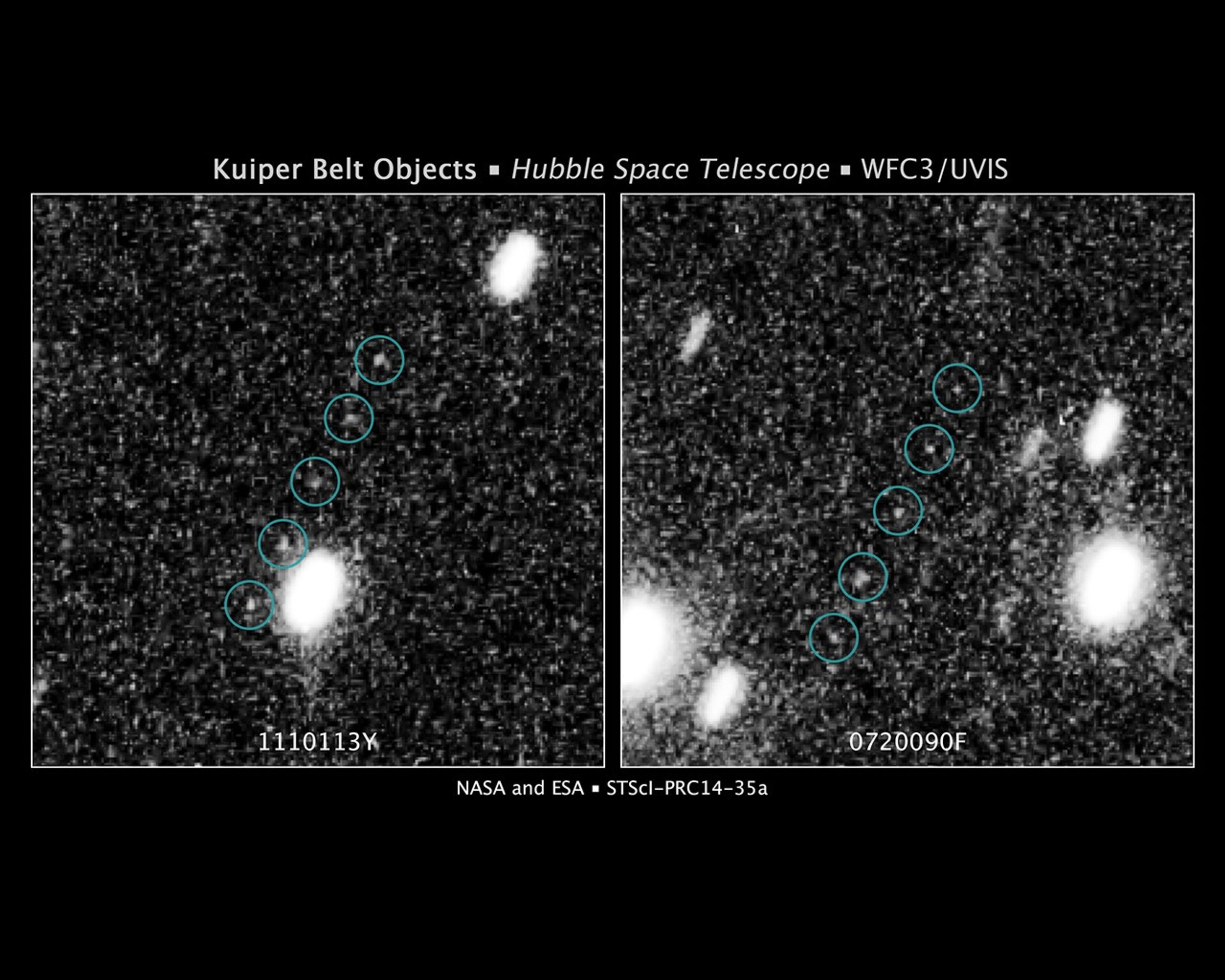1 min read
Kuiper Belt Object 1110113Y

About the Object
- DistanceDistanceThe physical distance from Earth to the astronomical object. Distances within our solar system are usually measured in Astronomical Units (AU). Distances between stars are usually measured in light-years. Interstellar distances can also be measured in parsecs.Roughly 4 billion miles from Earth at the time of observation
About the Data
- Data DescriptionData DescriptionProposal: A description of the observations, their scientific justification, and the links to the data available in the science archive.
Science Team: The astronomers who planned the observations and analyzed the data. "PI" refers to the Principal Investigator.The image was created from Hubble data from the following proposals: 13633 and 9583 J. Spencer (Southwest Research Institute), H. Weaver (JHU/APL), M. Buie (Southwest Research Institute), M. Showalter (SETI Institute), D. Borncamp (STScI), C. Fuentes (Northern Arizona University), A. Stern (Southwest Research Institute), J. Kavelaars (National Research Council of Canada), M. Belton (NOAO), and J.-M. Petit (CNRS, Observatoire de Besancon). - InstrumentInstrumentThe science instrument used to produce the data.HST>WFC3/UVIS
- Exposure DatesExposure DatesThe date(s) that the telescope made its observations and the total exposure time.June 24, 2014, Exposure Time: 31 minutes (5 x 370 seconds)
- FiltersFiltersThe camera filters that were used in the science observations.F350LP (long pass)
- Object NameObject NameA name or catalog number that astronomers use to identify an astronomical object.1110113Y
- Object DescriptionObject DescriptionThe type of astronomical object.Kuiper Belt Object
- Release DateJuly 1, 2014
- Science ReleaseHubble to Proceed with Full Search for New Horizons Targets
- Credit
Related Images & Videos

Hubble Survey Finds Two Kuiper Belt Objects to Support New Horizons Mission
These images are from a Hubble Space Telescope survey to find Kuiper Belt objects (KBOs) in support of NASA's New Horizons mission to Pluto. The Kuiper Belt is a debris field of icy bodies left over from the solar system's formation 4.6 billion years ago. Once the New Horizons...
Share
Details
Last Updated
Aug 17, 2025
Contact
Media
Claire Andreoli
NASA’s Goddard Space Flight Center
Greenbelt, Maryland
claire.andreoli@nasa.gov





























